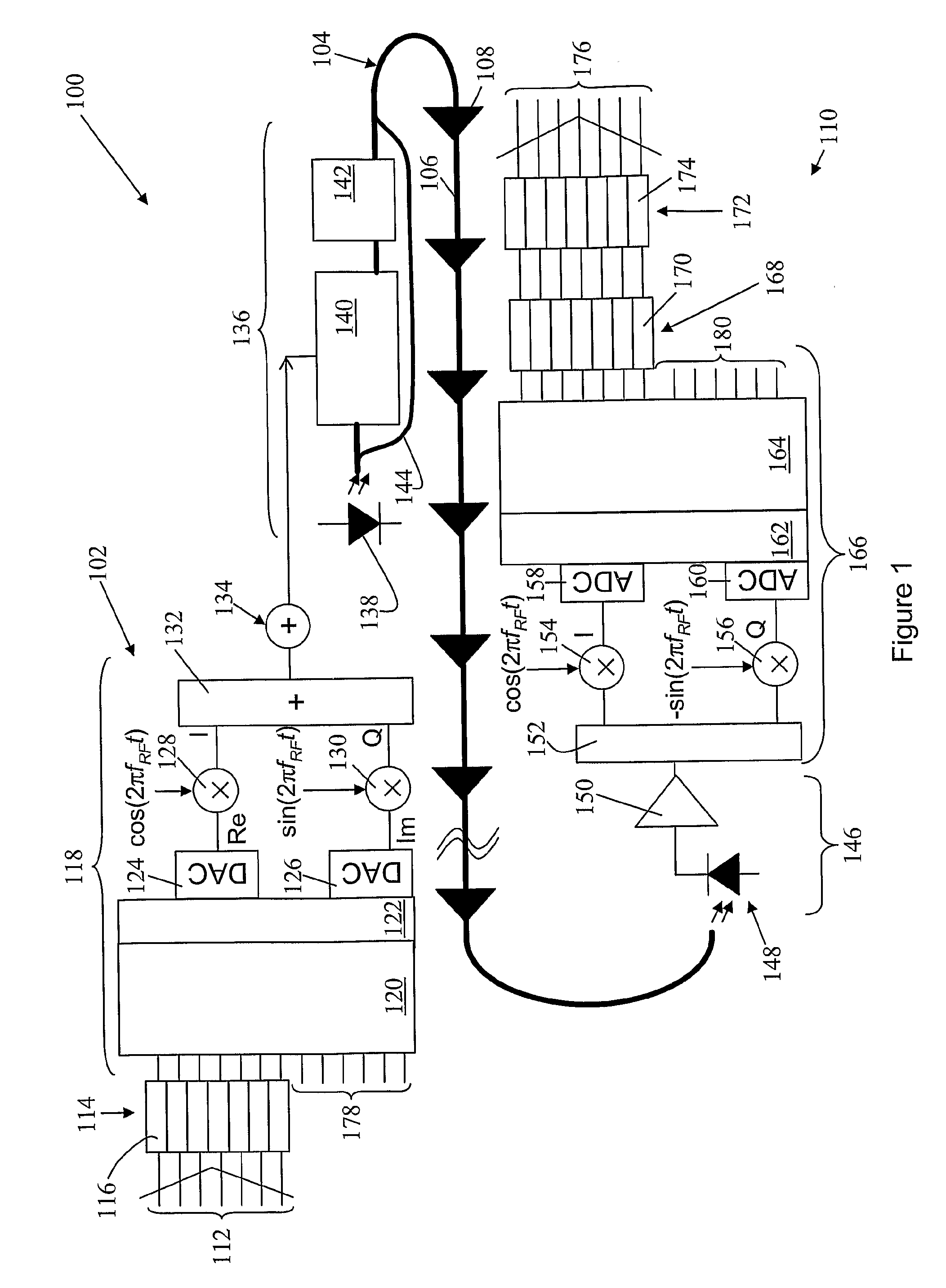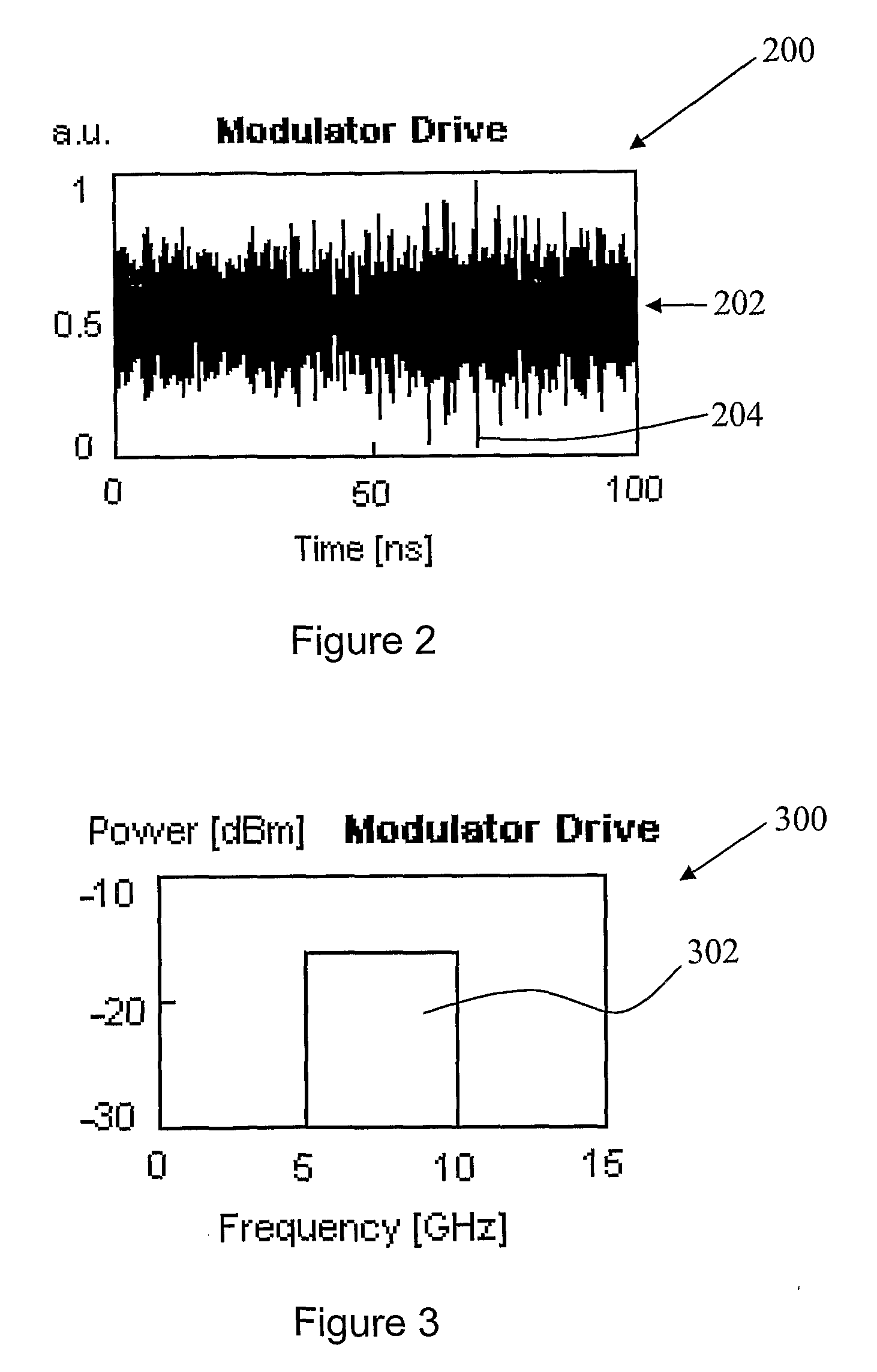Methods and apparatus for optical transmission of digital signals
a digital signal and optical transmission technology, applied in the field of optical communication, can solve the problems of severely limiting the reach of optical transmission spans, affecting the transmission speed of digital signals, and limiting the distance over which data may be transmitted in single-mode optical fibres before some form of regeneration is required, etc., to achieve high spectral efficiency, reduce the effect of chromatic dispersion of optical channels, and high spectral efficiency
- Summary
- Abstract
- Description
- Claims
- Application Information
AI Technical Summary
Benefits of technology
Problems solved by technology
Method used
Image
Examples
Embodiment Construction
[0081]Turning first to FIG. 1, there is shown schematically a system 100 for communicating digital information over a long span of dispersive single-mode fibre according to an embodiment of the present invention.
[0082]The exemplary system 100 includes apparatus 102 for generating an optical signal bearing digital information for transmission over amplified single-mode fibre span 104. The transmission span 104 may generally include a plurality of individual single-mode fibre sections, eg 106, with loss-compensating amplifiers, eg 108, inserted therebetween to overcome losses in signal power resulting from the attenuation of the single-mode fibre links.
[0083]The system 100 also includes receiving apparatus 110 for receiving the digital information transmitted from transmitting apparatus 102 over fibre span 104.
[0084]Digital information for transmission over fibre span 104 is input to the transmitter 102 via the parallel input port 112. The input digital information is processed within...
PUM
 Login to View More
Login to View More Abstract
Description
Claims
Application Information
 Login to View More
Login to View More - R&D
- Intellectual Property
- Life Sciences
- Materials
- Tech Scout
- Unparalleled Data Quality
- Higher Quality Content
- 60% Fewer Hallucinations
Browse by: Latest US Patents, China's latest patents, Technical Efficacy Thesaurus, Application Domain, Technology Topic, Popular Technical Reports.
© 2025 PatSnap. All rights reserved.Legal|Privacy policy|Modern Slavery Act Transparency Statement|Sitemap|About US| Contact US: help@patsnap.com



